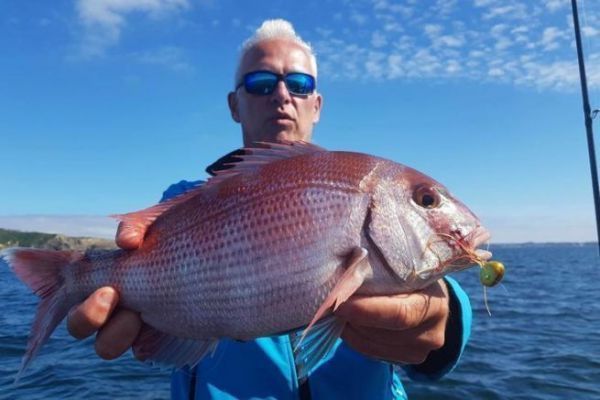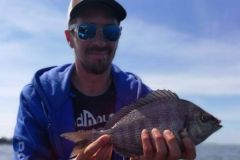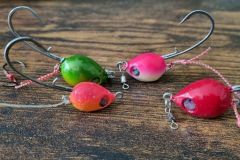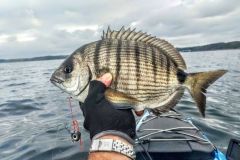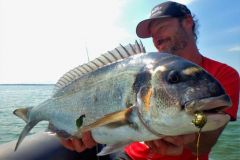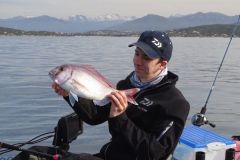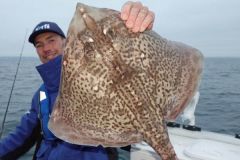Pagre, a fish that takes you off the beaten track
Pagre is the name given to a huge variety of fish, from the dog-tooth pagre (dog snapper) of the West Indies to the pink pagre of our coasts. The techniques below are adapted to each fish, but let's focus on the pink pike-perch of our coasts. The pink pike-perch, also known by its scientific name "Pagellus bogaraveo", is a species of fish belonging to the Sparidae family. This fish is omnivorous, feeding mainly on small crustaceans, molluscs, marine worms and sometimes small fish. This will be decisive for the tenya technique.
And let's face it, gourmets know that pike-perch is a fish prized for its delicate flesh. All the more reason to tackle this fish with tenya.
The tenya, an ally of choice
The tenya is what we call a bait lure. In fact, leaded, it has an artificial part often composed of a fixed hook on which the bait is positioned, and plastic filaments imitating octopus or squid, and a "free" hook which will complete the device. Available in many shapes and colors, I particularly like the K One Jigsten in yellow-green (n°12) and Caperlan's DYP tenyas for deep, dark areas.
A sensitive tenya-type rod will be a real plus for pike, as its suppleness will allow the fish to grab the bait without feeling the pull. Essential for all pike fishing. For beginners, Caperlan's Ilicium 500-250 is ideal for a small budget.
Now that you're equipped, let's talk techniques.
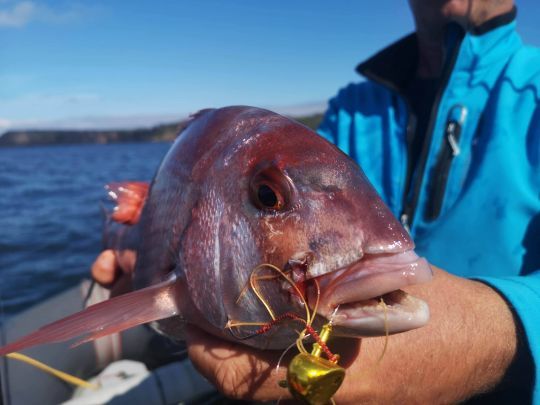
Choice of bait
Baits for tenya pike fishing are varied. As we have seen above, squid and shrimp are the first choice. But don't exclude mackerel florets, which produce excellent results. Be sure to place them correctly on the hooks for the most natural presentation possible.
The tenya, a fishing technique
Tenya fishing requires an ultra-precise technique. First of all, you'll need to find the right areas for pike. Cool waters with a medium current and good depths of 40 to 80 m on rocky bottoms are ideal. At such depths, you'll need to adjust the weight of your tenya. Your base weight should be 1 gram per metre of water. If you're vertical, you're too heavy; if you're at an angle of more than 45°, too light! Your braid should start at an angle of 30° to 75° max.
Once you've made contact with the bottom, let yourself drift quietly in the current, using slow, wide strokes regularly. You'll often get the bites at this point.
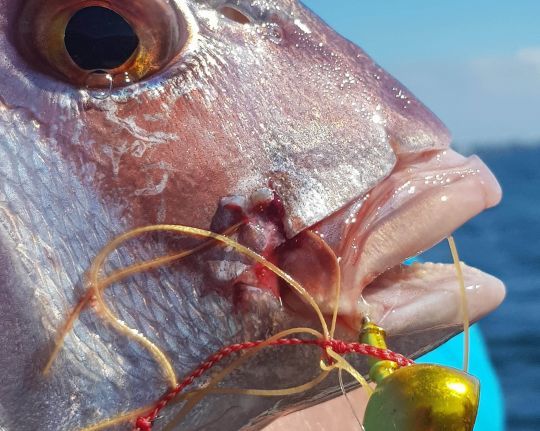
Patience and sensitivity, two indispensable virtues
Pagre fishing with tenya can require patience. Pagres are often cautious and may test the bait several times before swallowing it. Constant attention to the rod is essential to detect the slightest touch. Don't strike immediately, let the fish engamer.
Bonus tips
- Use fluorocarbon leader for discretion.
- Change colors and sizes of tenyas regularly
- Vary the menu as soon as the keys decrease
In conclusion, tenya pike fishing is a technique that requires patience and precision, but offers incomparable pleasures. With the right bait, the right technique and the right attention, you could be rewarded with a great catch. So get equipped and get started!
